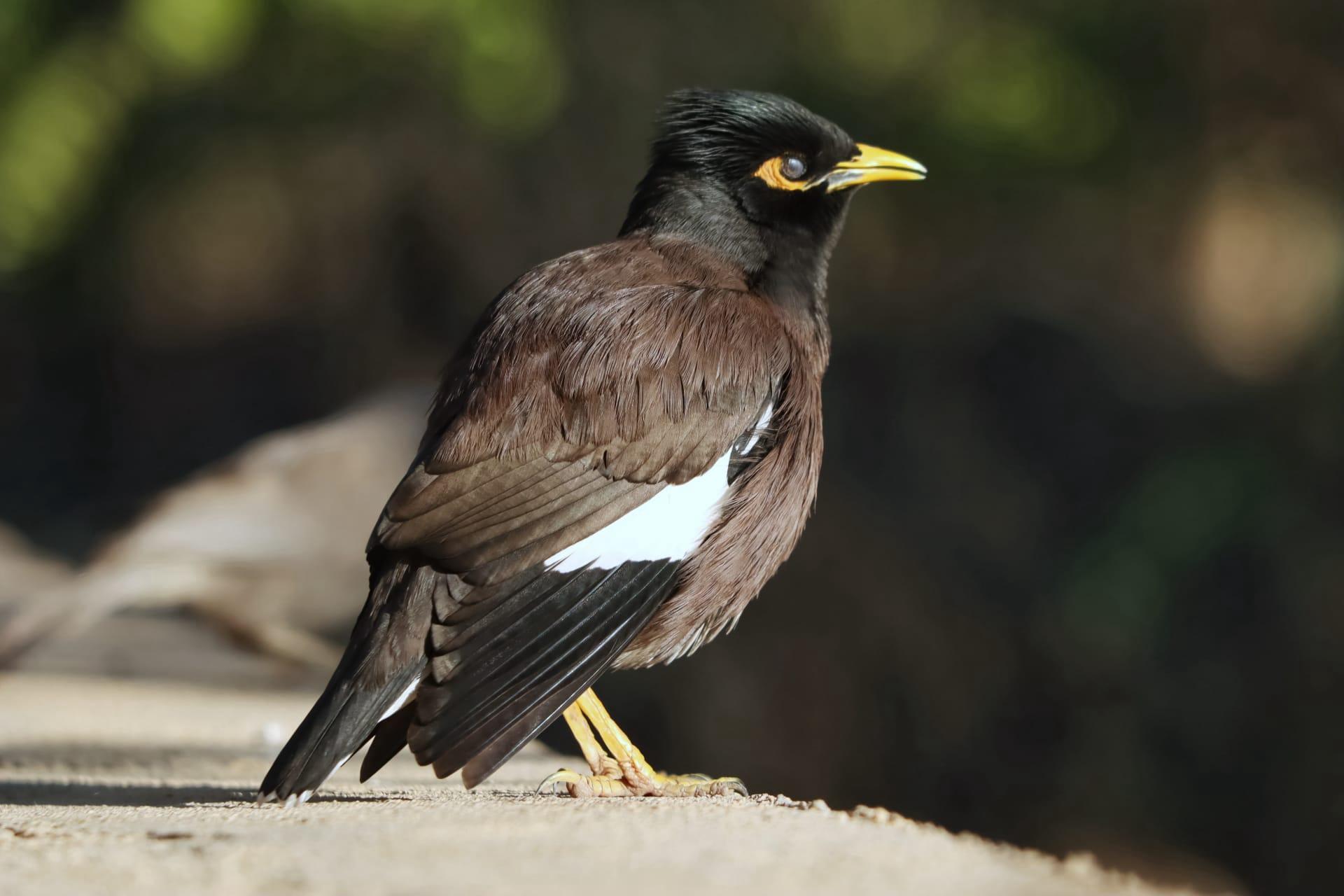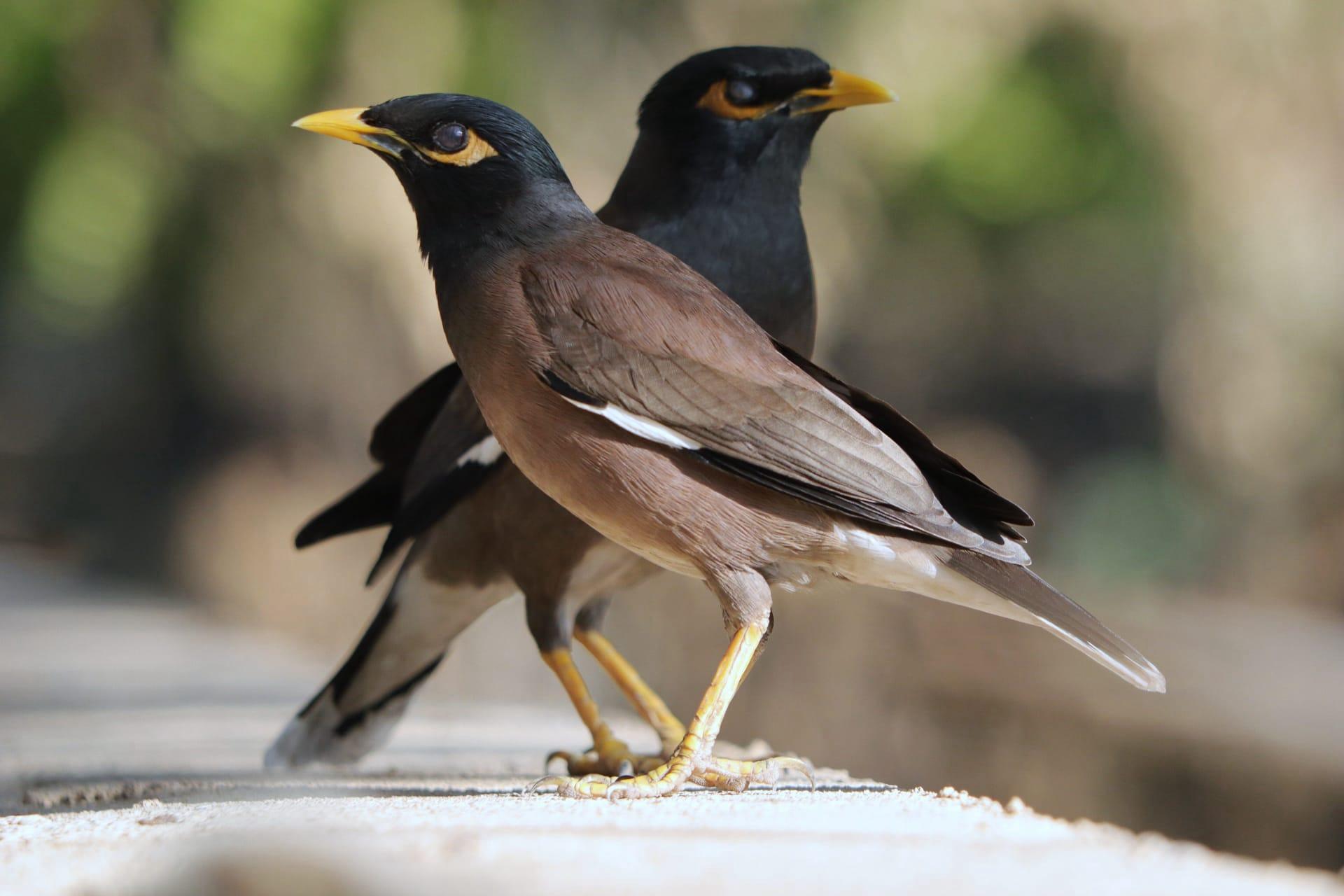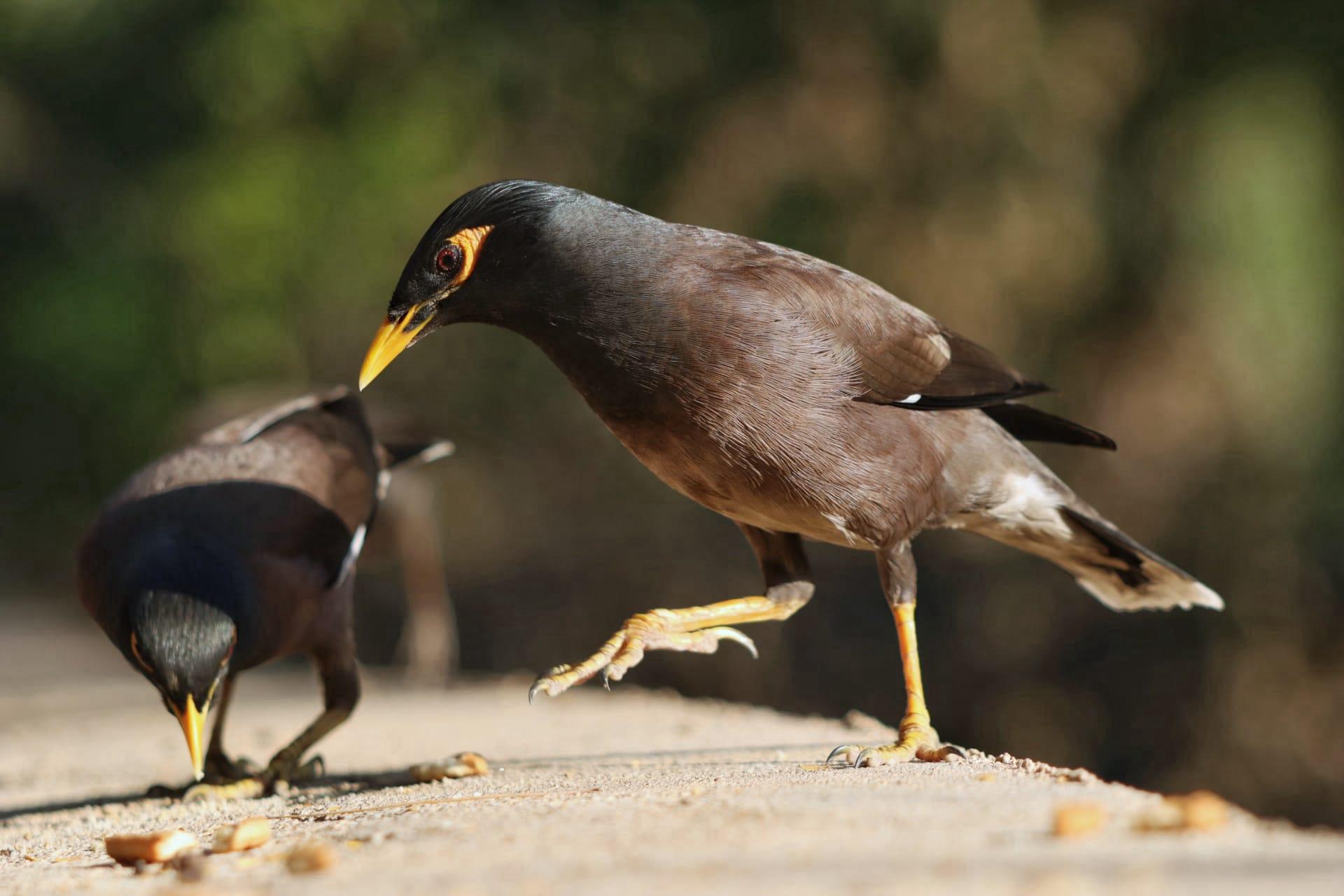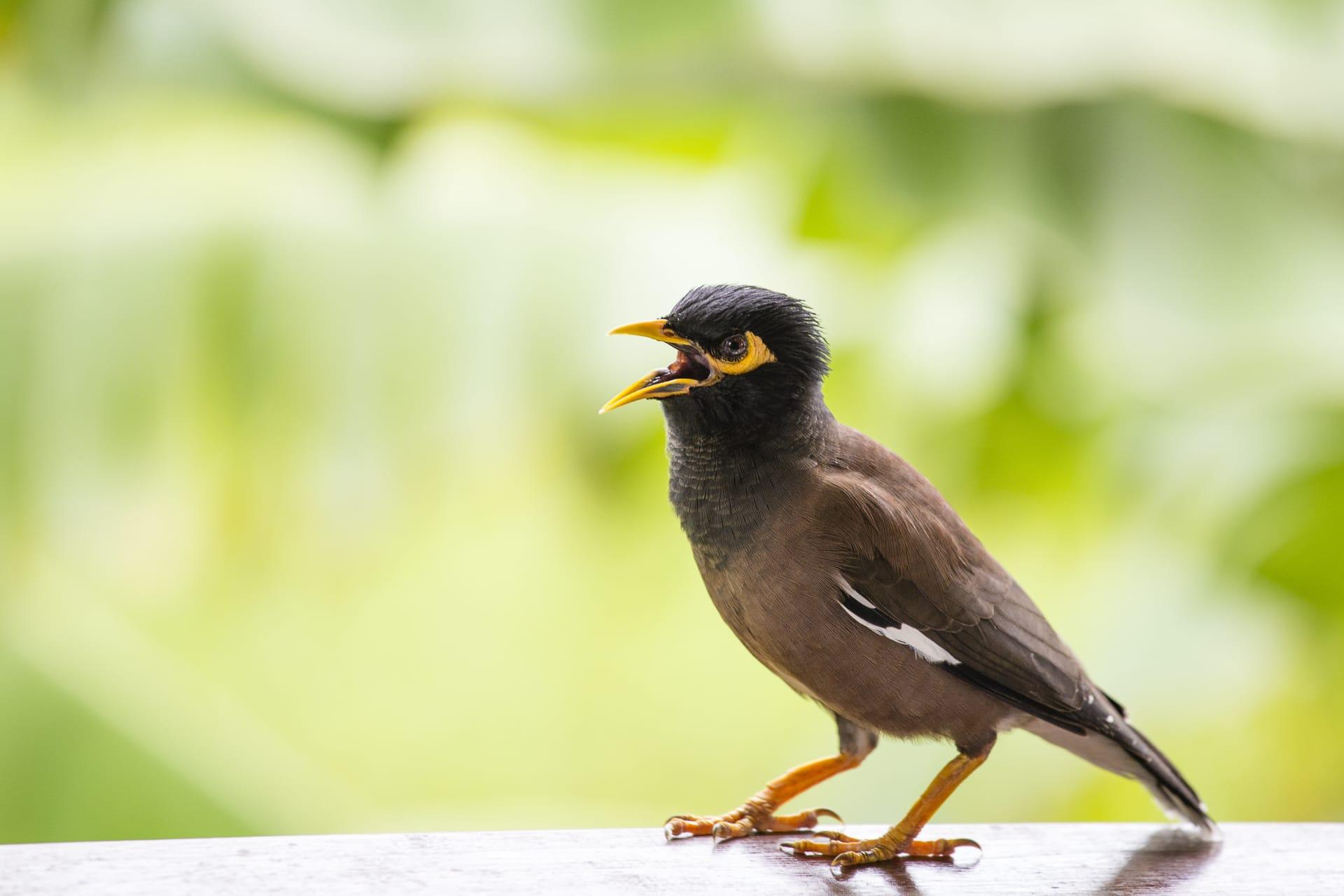Myna Characteristics
- Home /
- Mini Encyclopedia /
- Animal /
- Myna Characteristics
1
Mynas, known scientifically as members of the starling family, Sturnidae, are medium-sized birds renowned for their vibrant personalities and striking features. Typically, they measure about 23 centimeters in length, with a weight ranging from 120 to 140 grams. Their lifespan in the wild averages around 4 to 5 years, though some have been known to live up to 12 years in captivity. Mynas boast a sleek black body, contrasting with their bright yellow beak and eye patches, which make them easily recognizable.
One of the most distinctive organs of the Myna is its vocal apparatus. This bird is celebrated for its remarkable ability to mimic human speech and a variety of sounds from its environment. The syrinx, located at the base of a bird's trachea, is the key to this ability. In Mynas, it's highly developed and allows them to produce a wide range of sounds and tones. This vocal prowess is not just for show; it plays a crucial role in their social interactions and mating rituals.

2
Question: Why are Mynas known for being invasive species?
Answer: Mynas are often tagged as invasive due to their aggressive nature and adaptability. Originally native to Asia, they've been introduced to various parts of the world like Australia, New Zealand, and South Africa. Their adaptability allows them to thrive in diverse environments, from urban areas to countryside. However, this success comes at a cost to local ecosystems. Mynas are territorial and can displace native bird species, compete for food resources, and even affect agricultural crops. Their impact on biodiversity has made them a concern in areas where they are not native.

3
Mynas are agile flyers, characterized by their swift and direct flight pattern. They are capable of maneuvering adeptly through trees and urban landscapes. Their flight speed and agility aid them significantly in escaping predators and searching for food. On the ground, Mynas walk with a distinctive strut, often bobbing their heads.
In terms of feeding, Mynas are omnivores and exhibit diverse dietary habits. Their diet primarily includes insects, fruits, and nectar, but they can adapt to a variety of food sources, depending on availability. This versatility in diet is a key factor in their ability to colonize new areas successfully. They are known for their foraging skills, often seen rummaging through urban waste or foraging in grasslands for insects.

4
Mynas thrive in a variety of environments, ranging from natural forests to urban landscapes. They are particularly successful in human-dominated areas due to their adaptability and opportunistic feeding habits. This adaptability allows them to exploit resources in both rural and urban settings, from fruit trees and insects in forests to human food waste in cities.
Reproduction is a significant aspect of Myna life. They are monogamous birds, often forming long-term pair bonds. Their nesting habits are versatile, utilizing natural cavities in trees or buildings and sometimes even displacing other birds to take over their nests. The female typically lays 4 to 6 eggs, which both parents incubate. The chicks are altricial, meaning they are born relatively underdeveloped and require significant parental care before they can leave the nest.

5
Book: "Myna Birds: Unveiling the Mysteries" – This comprehensive book, published in the United States in 2010 by ornithologist Dr. Emily Sanders, delves into the intriguing world of Mynas. It covers their behavior, communication, and impact on ecosystems. Sanders' research provides insights into how Mynas have adapted to different environments and their interactions with other species.
Book: "The Myna Chronicles: From Asia to the World" – Authored by British biologist Dr. Richard Thompson in 2015, this book explores the journey of Mynas from their native Asian habitats to other parts of the globe. Thompson examines the reasons behind their spread, their adaptability, and the challenges they pose to biodiversity. The book offers a detailed look at the cultural and environmental implications of this species' global presence.